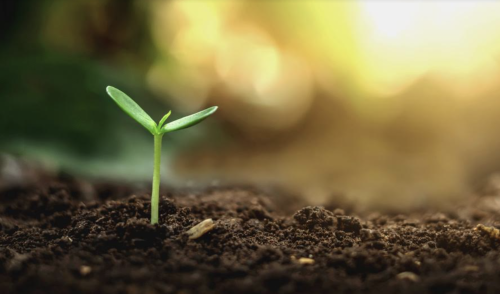Anaerobic digestion is a process able to degrade organic waste to methane using a diverse microbial community. However, not all organics present in the feedstock can be biologically degraded and the undegraded fraction are disposed to fields or incinerated. This fraction, called the digestate, is underexploited and represents an interesting source of humic substances as they remain undegraded during the AD process.
Our solution consists of a series of process to extract and concentrate those humic substances, specially fulvic acid. The first step is the mechanical separation of the liquid and solid phases. Then the liquid fraction undergoes a serie of filtration to remove inorganic precipitates, large particules and impurities. Then the concentration is done by reverse osmosis where the water is removed, and the humic substance solution retained.
This technology allows a recovery of 60% of the humic substances in a solution containing at least 50% of fulvic acids. Further concentration steps can be done if necessary to obtain a solution with a minimum concentration of 12% w/w.
Humic substances are naturally occurring organic product derived from humus, the organic material in soils produced by the decomposition of organic matter. They are the major organic components of lignites, soil, and peat and contain fulvic acids, humic acids and humins. These substances are active components in soil and provide numerous benefits for plants.
Humic substances are naturally produced by the biodegradation of organic matter resulting in a mixture of acids containing phenolate and carboxyl groups. Fulvic acids are humic substances with a higher oxygen content and a lower molecular weight than humic acids. Humic acids precipitates at a pH lower than 1.8 whereas fulvic acids stay soluble at any pH. A number of examples exists indicating the potential for these substances to improve abiotic stress resistance in plants.
Humic substances, including fulvic and humic acids, are largely found in fossil deposits of lignite and leonardite. While humic substance are naturally occurring, extracting them from natural resources has proved to be complex and problematic. This is particularly true for extraction of natural sources that are not fossil deposits. Extraction and concentration of humic substances generally require the use of acids and bases to leach and precipitate the desired components, and often involve many complex and energy intensive processes.
It appears obvious that there is a need for a low-cost and eco-friendly extraction and concentration method for obtaining humic and fulvic acid from renewable natural resources. The technology developed by LIST consist of a novel and sustainable process to produce a fulvic-acid rich solution extracted from the digestate of anaerobic digestion process.
Benefits :
Our technology will be able to produce a biostimulant for plant (Humic substance) that is:
- Safer to produce as the invention uses no strong acid or base
- Sustainable as the invention only uses organic waste as material, renewable energy usage from AD and no chemical product.
Applications :
- Humic acids are high value products, especially fulvic fractions, with many applications in very different fields: plant biostimulants, soil remediation, animal feed additives, human health (digestion), etc.
- Plant biostimulant, including fulvic-like substances is an immature and growing market. European commission is currently developing a legislation to regulate the market of plant biostimulants. The market of plant biostimulants in Europe is of 570 M€
- Solution of humic acids at 12% w/ of humic substances w (9% humic acids, 3% fulvic acid) are traded at approximately € 2.50 per litre. The innovative method presented here allows to produce humic acid without chemical additive use in the production process, and therefore, allowing access to the organic agriculture market, in need of biostimulants.
Opportunity:
We are looking for an industry partner to bring the technology to market and commercialize the technology.
Intellectual property status
Patent already applied for
Patent application number : Lu501059


